”The prevailing soft multiculturalism of our times has made the phrase “the fall of Rome” a surprisingly controversial one. It’s much preferred to talk about “transformation” rather than “decline and fall.” In this “transformationist” view, the High Classical period of 200 BCE-250 CE subsides gradually, almost imperceptibly into the “Late Antiquity” of CE 350-700. The barbarians did not invade; they migrated. Rome did not fall; it experienced a “fusion” with the new migrants in a “cross-cultural exchange.” (I am quoting here from the catalogue copy of a recent museum exhibition on the arts of Late Antiquity.) —David Frum
In the spirit of multiculturalism and ”reasonable accommodation” everything is equal just different. However, based on objective evidence, the ”Late Antiquity” school should be quite embarrassed to share the podium. Evidence aside, the “Late Antiquity” school has all our modern prejudices – and in a fight between evidence and prejudice, prejudice wins every time, or at least until an equilibrium is restored.
”Attila eventually moved into the big time after killing off his brother, who may not have had the vision for high-end racketeering. At his height, Attila was reportedly extorting more than a ton of gold a year from the Eastern Roman Emperor in Constantinople and was also squeezing towns as far west as central France (Gaul). But this kind of activity pushed what was left of the Empire (East and West) into interlocking alliances with the Visigoths. A combined army defeated Attila outside Chalons in the modern Champagne district of France in June of 452. Attila had lost battles before, but he had always found softer targets, refilled his war chest, done some local recruiting, and hit the comeback trail.”
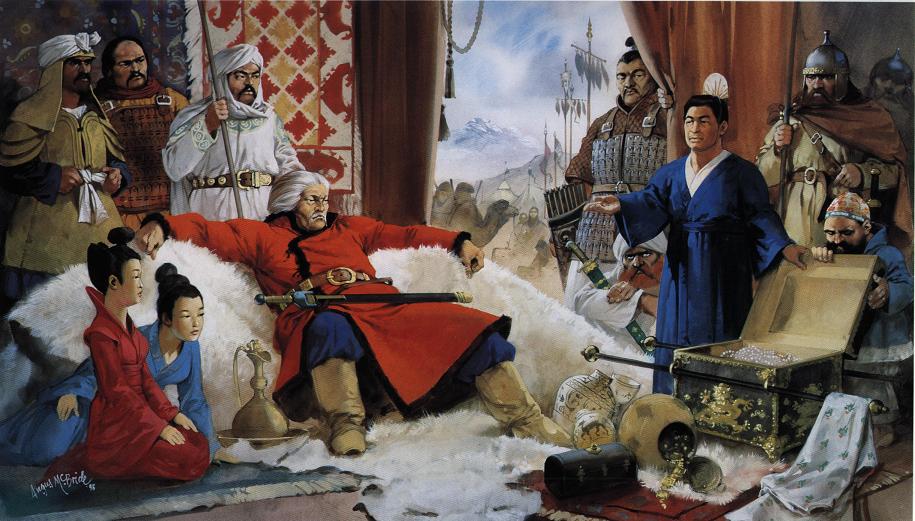
This image is from the Osprey books. www.ospreypublishing.com Osprey folks would never mistaken Attila and put him in China. These are some other people, maybe Xiongnu (original Huns).
The peaceful coexistence of Goths and Romans and the slow Gothic penetration of the Roman world were rudely interrupted by the sudden descent of the Huns. Probably of Mongolian origin, the Huns in the course of their own migration from the east had gathered a great variety of nomadic tribes into their army. Their strange habits evoked terror in Europeans. They practiced cranial deformation, reputedly killed their old people, and burned their dead; and that was on a good liberal week. They seemed to live in the saddle, allegedly ate their meat raw , rarely or never washed, and fought with unspeakable savagery. They are described as small in stature, with broad chests, disproportionately large heads, tiny eyes, and flattened noses. How much truth there is in this description we shall never know. In any case, the Huns apparently changed radically in the course of a century.
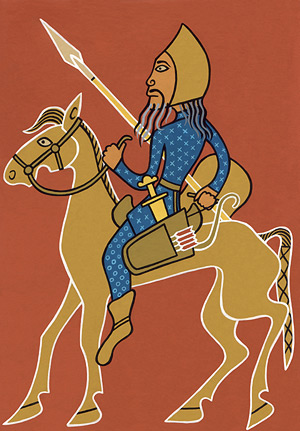
Attila the Hun was displayed on horseback, because it wouldn't be appropriate to depict the khan of a nation of horsemen on foot. The clothing, the horse's bridle, and the weaponry were entirely derived from the Scythian examples on the comb, vessels, and plaque. The face was modelled on description of Jordanes. All was deformed and coloured on the basis of the style characteristics of the ‘animal style’ and the Pazyryk culture. It's almost unthinkable that Attila the Hun ever sat on his horse with so many weapons at once.
Fifthly, the barbarity and savagery employed in battle and warfare by Attila is second to none of Rome’s enemies throughout history. Attila’s method was simple and very effective against undisciplined and low morale foes: to terrorise the surrounding lands and armies, as a warning to others. The fear invoked by the Hunnic horde ravaging through the countryside completely sapped spirit from all who opposed him. English historian, Edward Gibbon, talks of Attila’s twisted desire for war, explaining how “he wished to enjoy the terror which he inspired”[6]. Part of Attila’s terror tactics was to strike fear into the enemy by tying severed enemies’ heads and skulls to his men’s saddles. Furthermore, Gibbon talks of the Huns screaming and wailing into battle, surely a bloodcurdling sight for even the bravest warrior. Attila’s foremost tactic was to use hit and run tactics, incorporating a feigned retreat, taking full advantage of his mobile missile cavalry. Initially, this brought him great success, but repetition was its flaw. Aetius countered Attila’s feigned retreat, as well as the monumental impact that terror tactics had on enemy soldiers. Through discipline and charisma, Aetius lifted the spirits of his troops, thus, neutralising the effects of the Huns savagery. Furthermore, Attila was outdone by Aetius’s allies, the Visigothic Paladin heavy cavalry and light Alans cavalry[7]. The barbaric savagery that worked so effectively initially for Attila, for example at the Sieges of Reims, Strasbourg and Trier, was eventually undone due to his inability to adapt. Clearly, Attila was not an inspired leader, but, merely, an unadaptable demonic savage versed in only terror and barbarity.
Sixthly, Attila’s true brutality is demonstrated succeeding a siege or battle when he has free reign to pillage, plunder, sack, and all the rights of a conqueror over the vanquished. This is exemplified no better than during his campaigns in Gaul during 451AD. Edward Gibbon recounts Attila’s exploits in Gaul, destroying over 70 cities, stating “cities…were reduced into heaps of stones and ashes…exposed to the rapacious cruelty of the Huns”[8]. Discontent with solely razing the settlement to the ground, Attila went on to pillage and plunder, and torture and abuse the surviving populace. An anonymous historian puts this rather ineloquently, saying Attila was, “utterly cruel in inflicting torture, greedy in plundering, insolent in abuse”. In fact, so proud of the savagery and cruelness of their ruler’s conquests, the Huns would sing songs dedicated to Attila and his barbaric victories[9]. The fear Attila spread throughout the Roman Empire and entire western world was incredible, and Gibbon illustrates the famous, or, rather, infamous reputation of Attila among the Romans, “the name of Attila was familiar and formidable at Constantinople”. Attila the Hun’s demonic savagery is excellently demonstrated in the post-battle or siege actions he and his army took. The rape, torture, abuse, pillaging, sacking and burning of so many settlements is a testament to the barbarity of this cruel and bloodthirsty warlord. Attila the Hun was, beyond doubt, a demonic savage, bent on destruction and obliteration of those who did not submit to him, such as those foes who succumbed to his forces in Gaul. ( Alexander Knights )
The sudden onslaught of the Huns in 374 and 375 shattered the Gothic and Alanic kingdom of the Ukraine. The Goths were permitted to settle in Thrace but the Romans took advantage of their desperate straights, charging such outrageous prices for bread and meat that the Visigoths revolted. At the great battle of Adrianople in 378, they inflicted a crushing defeat upon the Romans, killing the emperor and almost annihilating the Roman army. With that battle the barbarian ”invasions” may be said to have begun.
But ”invasion” is scarcely the word. The Visigoths did not know how to consolidate their victory. The Visigoths were essentially marauders, and plunderers, or acted as contract mercenaries. The only Roman general who could control the Visigoths, either by bribes or military force, was Stilicho the Vandal. After Stilicho’s assassination in 408 on orders of gthe jealous emperor Honorius, Rome was doomed. In August, 410, Alaric’s Goths took Rome. Alaric gave his soldiers permission to plunder Rome and the citizens were compelled by beatings and threats of death to give up their gold and valuables. The Goths were not a horde of wild men, but a disciplined Roman army and generally respected the sanctuary of churches and largely respected Alaric,s orders that no man was to be killed unless he was bearing arms and that no fires were to be set.

Caravaggio. Saint Jerome. ''It is not coincidence that one of the earliest writers of Christianity, St. Jerome was a pagan scholar and theologian. Jerome’s Vulgate Bible–amalgamation of truth and fiction, pagan and Christian is to this day the authoritative Bible of the Catholic Church. Jerome and other founders of the Church outlined one important part of Christian belief: that there is some good in everything, and that in general things can be redeemed instead of being destroyed.''
Nevertheless, a shock rant through the Roman world as the news spread that Rome had fallen for the first time in eight hundred years. Saint Augustine began writing ”The City of God” to answer the pagans’ charge that Rome had been punished for abandoning her old gods. Saint Jerome felt obliged to quote Virgil’s description of the sack of Troy as the appropriate epitaph for ”the city which had captured the whole world”
Alaric and his men next set ot to invade North Africa, as the Vandals were later to do successfully; because North Africa was the granary of Rome. They reached the southern tip of Italy and attempted to cross the Straight of Messina, but their fleet was destroyed by a storm. Then, to compound the disaster, Alaric died suddenly, probably of disease. The Goths held a great funeral for their young king. They diverted the Busento River near the town of Cosenza and had their prisoners dig a grave for Alaric in the old riverbed. Vast quantities of booty; gold, silver and weapons were buried with the king, and then the river was turned back into its old channel. The prisoners were killed to preserve the secret of the burial place. That is the reason given by the historian Jordanes, himself a Goth. However, there was most likely another motive for this massacre….
”Since its seizure by Rome 550 years before, North Africa had been one of the most secure and prosperous of all the imperial domains. Its grandest estates were owned outright by the emperor and its huge agricultural surplus supported the cost of the imperial armies – armies that a low-productivity pre-modern society could only sustain through the ruthless exploitation of slave labor. The loss of North Africa in the 430s wrecked the finances of the western Roman empire, extinguishing the empire’s power to sustain its military forces. Desperate attempts to regain the province were easily repulsed – and the western Roman state collapsed, victim of a shattering military defeat.” ( David Frum )


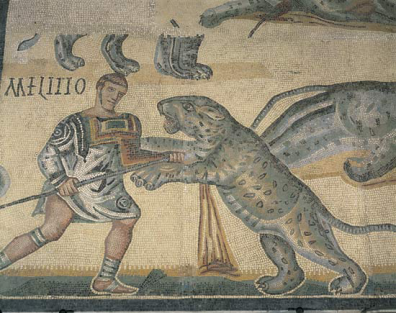
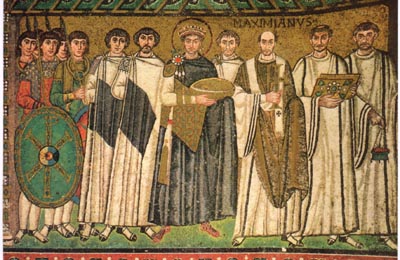
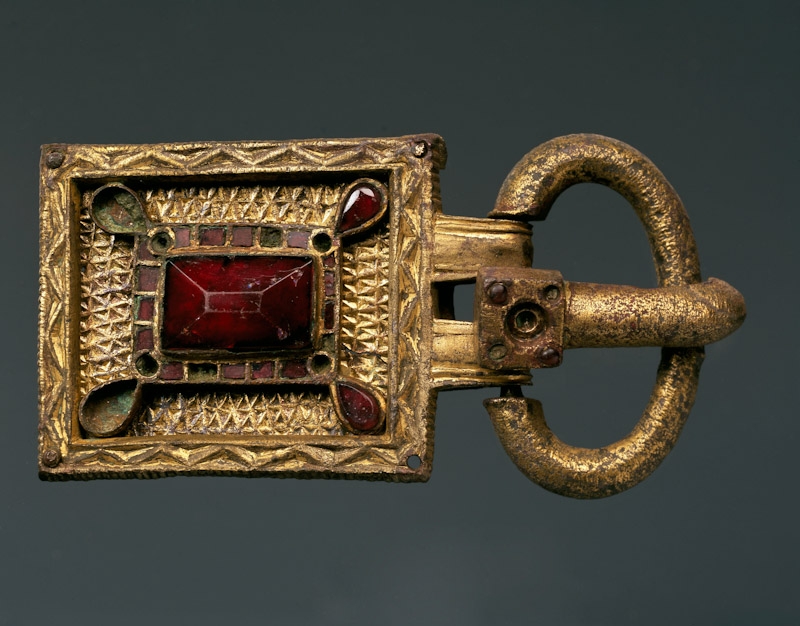



 COMMENTS
COMMENTS